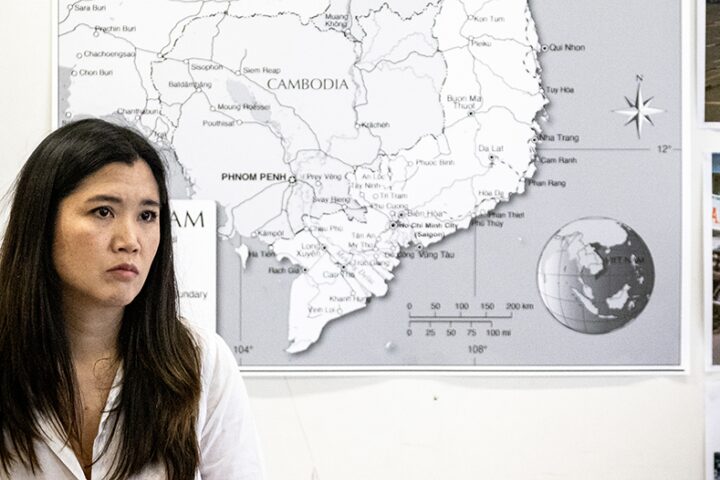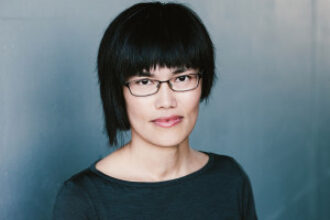Vietgone: 'the anti-Miss Saigon'

Scholar and Pulitzer Prize-winning author, Viet Thanh Nguyen writes in his book, Nothing Ever Dies that ‘all wars are fought twice, the first time on the battlefield, the second time in memory.’ However, the memorialisation of the fallen soldiers on all sides of a conflict is difficult because ‘memory, like war, is often asymmetrical’. (2017, p. 153)
For the men and women from the former South Vietnam, this observation is even more poignant because South Vietnam was not America’s enemy in the Vietnam War, but its ally. The stories of people like the characters in Qui Nguyen’s remarkable play, Vietgone, have been silenced and even suppressed.

As recorded in One Crowded Hour, Australian combat cameraman Neil Davis believed that ‘the impression given to the world was that the Americans were doing almost all of the fighting [in the Vietnam War], while the inefficient and cowardly ARVN [Army of the Republic of South Vietnam] were sitting back and doing nothing. That was not true, and the international press should accept responsibility for not telling the truth. It was inaccuracy by omission'. (Bowden 1987, p. 121)
Similarly, Monash University historian, Professor Nathalie Huynh Chau Nguyen states that ‘South Vietnam was a central participant in the Vietnam War, but its history and the histories of South Vietnamese soldiers and civilians have largely been erased in the vast historiography of the war’. (Australian Historical Association 2018)
The powerful images of the final days of South Vietnam have been depicted in significant artistic works such as Viet Thanh Nguyen’s novel, The Sympathizer; Schönberg and Boublil’s musical Miss Saigon, and now in Vietgone — though the playwright Qui Nguyen himself describes Vietgone as ‘the anti-Miss Saigon’. (American Theatre 2017)

The vast majority of refugees, however, fled Vietnam in the years after these historic events.

Closer to home, my resilient and brave sister, Châu was primary school-aged during the wartime period. This is how she recalls the days leading up to the Fall of Saigon on 30 April 1975: ‘We went up to the rooftop garden and saw bullets firing — lights — in the area of Tân Sơn Nhất airport. On television, we watched the images of US helicopters taking off with people dropping off.’ She watched as people were unable to cling on to the bottom skids of the overloaded choppers.
This was how the evacuation — codenamed ‘Operation Frequent Wind’ — commenced for any remaining Americans and ‘at-risk’ South Vietnamese people (those who served or worked with the Americans). It is estimated that ten thousand people clamoured outside the embassy gates to try to escape. Meanwhile, South Vietnamese air force pilots flew helicopters loaded with their families on board and landed on the decks of American ships.
The vast majority of refugees, however, fled Vietnam in the years after these historic events. Over the following two decades, ‘the extent of state repression that occurred in post-war communist Vietnam led to the mass exodus of more than two million people from Vietnam,’ explains Nathalie Huynh Chau Nguyen. Repression by the state included internment and torture in ‘re-education’ camps for former members of the South Vietnamese army and forced labour on collective farms in the ‘New Economic Zones’ for residents of Saigon, which had been renamed Ho Chi Minh City.

Qui Nguyen’s Vietgone superbly captures the epic narratives of lives shaped by history

Vietnamese asylum seekers risked their lives despite the threat of predation by pirates and drowning as a result of overcrowded, makeshift boats. Those who managed to reach refugee camps in Malaysia, Indonesia, Thailand, or the Philippines were eventually resettled around the world, including more than a million in the United States and 80,000 in Australia. Prime Minister Malcolm Fraser is credited with making the politically courageous decision to allow Vietnamese refugees to resettle in what was still a very white Australia [1].
In 2025, it will be the 50th anniversary of the end of the Vietnam War. The Vietnamese community is now well-established in Australia. Like the waves of Greek and Italian immigrants who preceded the Vietnamese, the hardships faced by the first generation have allowed the second generation to reach for success. This younger generation, người Úc gốc Việt or ‘Australians with Vietnamese roots,’ are making remarkable contributions to this country. Their stories have been captured by talented writers such as Anh Do, Nam Le, Tracey Lien, Cat Thao Nguyen, Hoa Pham, Sheila Ngoc Pham, Vivian Pham, André Dao, just to name a few. Last year, in south-west Sydney, former child refugee Dai Le was elected to the Australian House of Representatives.
While the specific circumstances of resettlement were experienced differently in the USA compared with Australia, Qui Nguyen’s Vietgone superbly captures the epic narratives of lives shaped by history.
— Chi Vu
[1] The dismantling of the ‘White Australia Policy’ took place in 1973 by the Whitlam Labor Government.
About the Writer

Chi Vu is a playwright and author whose works have been published in The Macquarie PEN Anthology of Australian Literature and Joyful Strains: Making Australia Home


